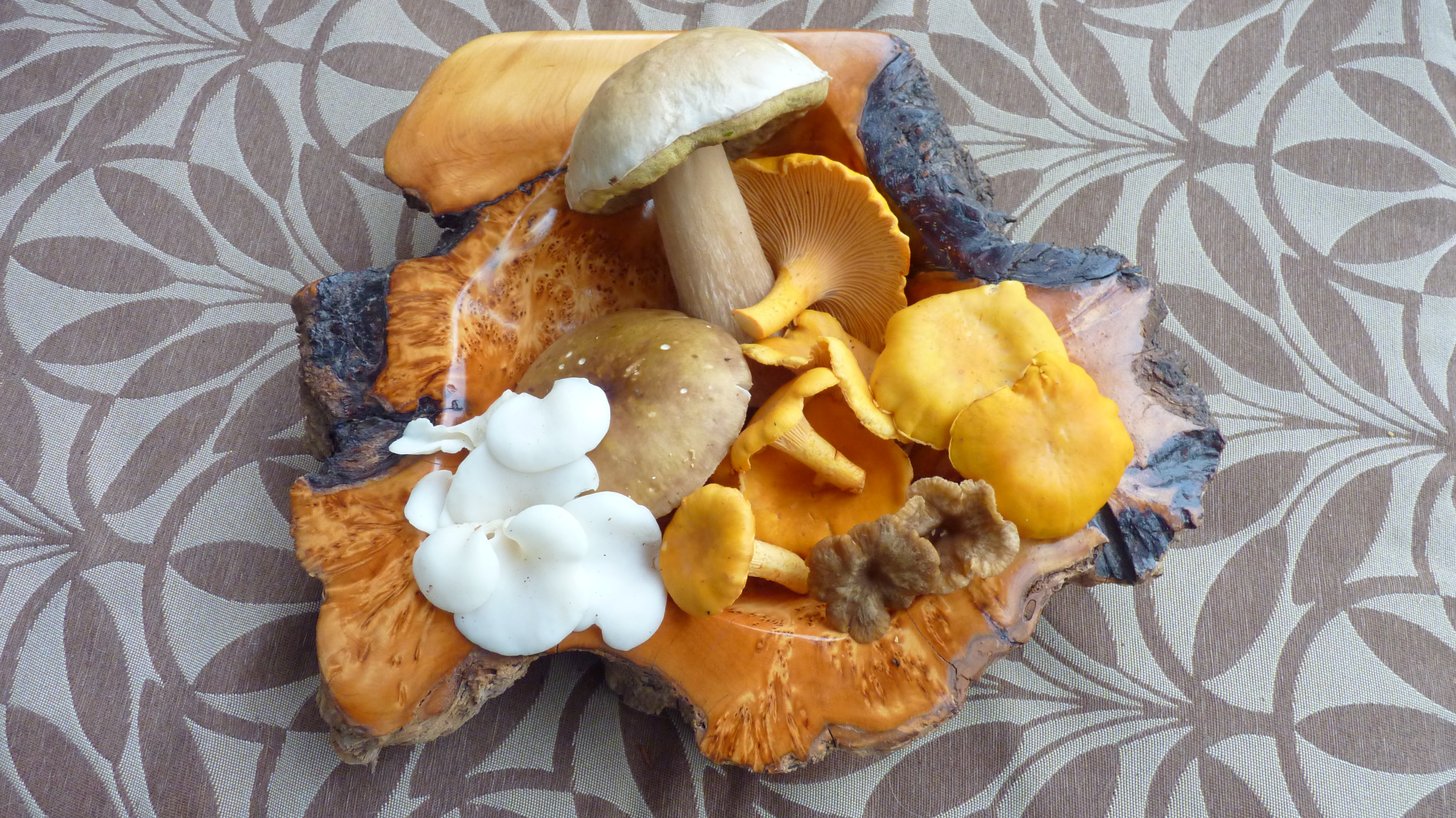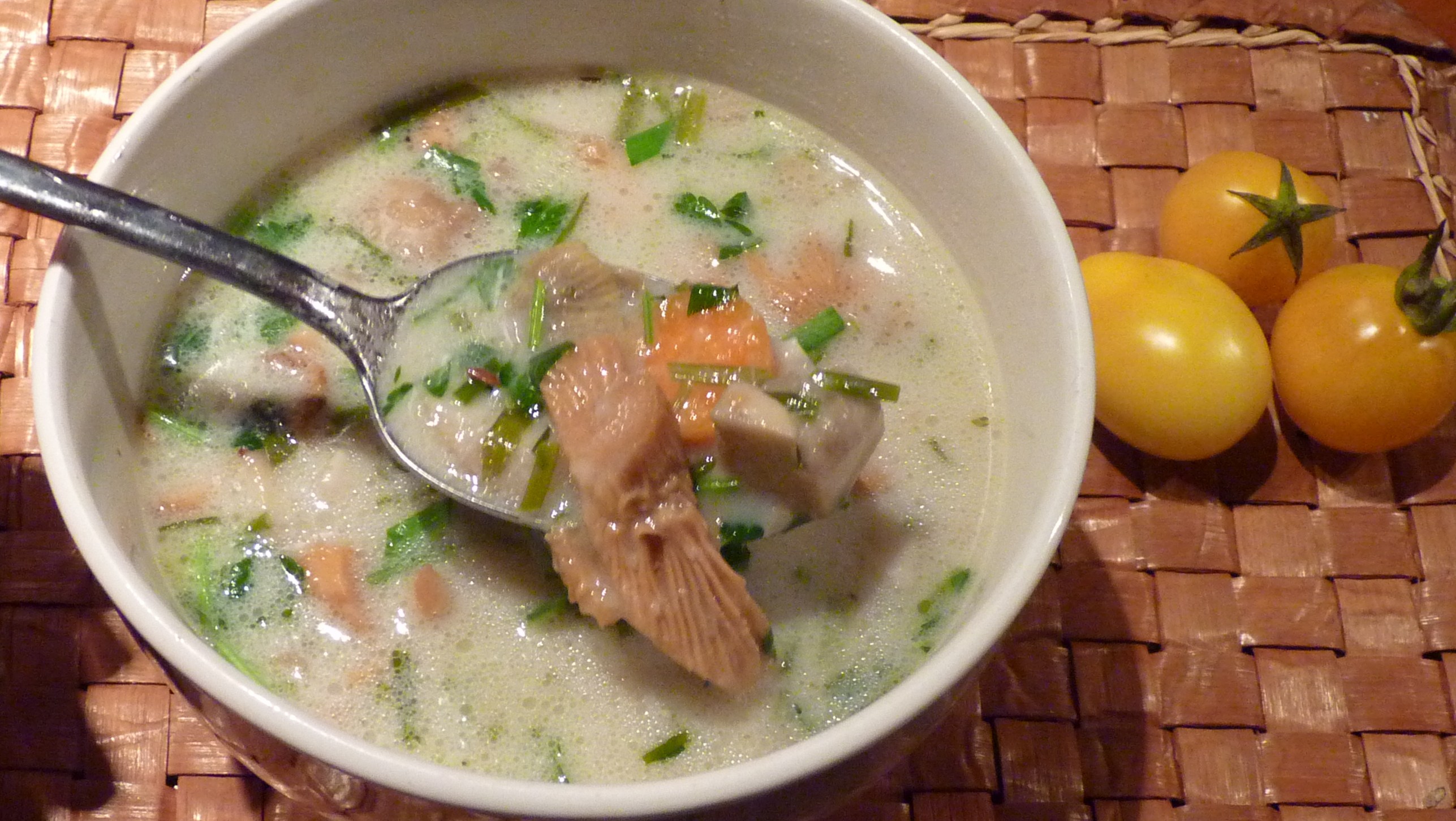Identifying & Harvesting Wild Edible Mushrooms

It’s time to free yourself from the cultural fear of harvesting your own wild mushrooms, especially since I just saw yellow chanterelle being sold for over $30 a pound. I felt like selling my shopping bag full of mushrooms I recently harvested. The fact is, there are many safe and easily identifiable mushrooms to be found, including many culinary favorites.
I know it’s hard to gain confidence to pick your own, especially since we have been conditioned to believe there’s a good chance we could die from eating the wrong toadstool. An Ontario poison center had a POISON ALERT on their home page stating, “Foraging for mushrooms could cost you your liver, or your life.” The truth is, you are 400 times more likely to die from pharmaceuticals than from a foraged mushroom.
The AAPCC (American Assoc. of Poison Control Centers) reported only 10 deaths from 2010-2012. In British Columbia, there have been only four reported incidences of mushroom poisoning, ever, with only one death among those. Almost exclusively, these poisonings have been caused from one mushroom family, the Amanita, and most of these mushrooms have very distinguishable features.
So here’s some tips to turn your next hike into a fearless, fungi-foraging adventure:
1. Bring a field guide with you. Here are my favorites: All that the Rain Promises and More and Mushrooms Demystified by David Arora
2. Familiarize yourself with the Amanitas.
3. Search for easily identifiable mushrooms at first. LMB’s can be discouraging. (little brown mushrooms)
4. Make sure you can check off ALL the distinguishing features of your mushroom. Most field guides provide possible look-a-likes as well, but don’t let that discourage you. You will be able to see the differences.
5. If your mushroom has an amanita look-a-alike be extra careful and definitely do a spore test if you feel uncertain about your ID. Generally, most other non-edible mushrooms will only cause mild to moderate symptoms of gastric upset, but that can happen from an evening out at a restaurant.
6. I’d probably be viewed as giving reckless advice if I didn’t mention the “classic” wild harvesting rule: If you’re unsure, don’t eat it. But seriously, if you’re unsure, read your field again, listen to your intuition, let go of your fear and start enjoying the wondrous, abundant and delicious world of wild mushrooms.

Wild Mushroom Soup
(In the wilderness, my cooking is always a little of this and a little of that, so measurements may vary a little)
~ 1/2 cup purple potatoes or carrots – diced small
1 1/2 cup coconut or almond milk
1 cup of water or stock
1/2 cup onion – diced
lrg palmful of bull kelp seaweed or 1/4 tsp Celtic sea salt
dash of pepper
sprig of thyme
lrg palmful of fresh cilantro and chives
2 cups mushrooms – diced
clove of garlic
tsp coconut oil
Dry saute mushrooms and then add garlic, pepper, thyme, onions and coconut oil. Add water, coconut milk and potatoes. Bring to near boil and then simmer until potatoes are tender. Add fresh cilantro and chives.

Nikki van Schyndel
Adventurer – Wilderness Guide – Expert Tracker & Primitive Survivalist
Tired of waiting for her plane to crash or a worldwide technical disaster to create a real-life survival emergency, Nikki paid someone to abandon her on a deserted island in the wilderness for nearly two years, testing her skills and learning the truths of survival. From dream home to lean-to, diamonds to bear claws, Nikki shares this incredible journey in her bestselling book Becoming Wild.
If you have any comments then please drop us a message on our Outdoor Revival facebook page
If you have some good ideas for fire lighting or have a blog you would like to share let us know about it on our FB page, we’re also happy for article and review submissions , we’d love to hear from you.
Outdoor Revival – Reconnecting us all to the Outdoors
